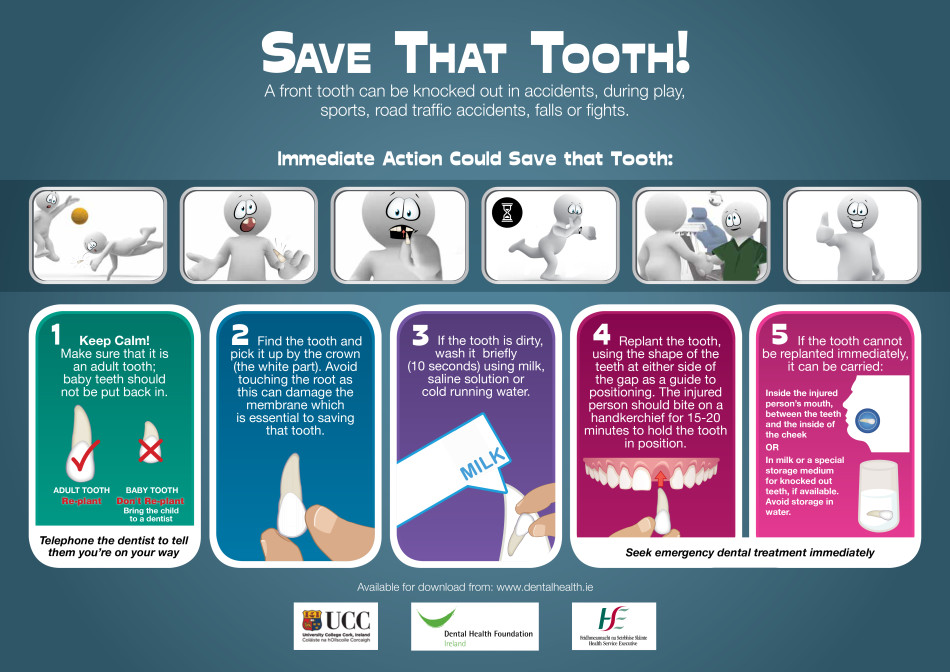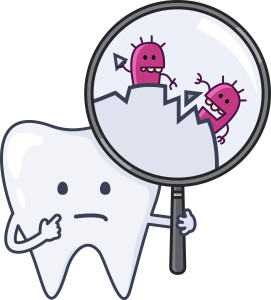Around the ages of 6 or 7 years old, the two common emergencies are: tooth pain and double teeth. Both are signs of normal tooth development. A child who experiences a first loose tooth may be scared and describe the weird feeling as painful. If the child is in discomfort, come see Dr. Kimmy to help “wiggle” the tooth.
A normal pattern of tooth eruption is when a permanent tooth absorbs the root of a primary (baby) tooth. This causes the baby tooth to have less anchorage in the bone and loosen and eventually fall out. Sometimes, the permanent teeth erupt behind the baby teeth and do not cause the natural phenomenon of loose teeth. In this case, Dr. Kimmy can “wiggle” the baby teeth so that the tongue can push the permanent teeth into place.
Do not panic. Remaining calm will help your child remain calm. If the lost tooth was an adult tooth, find it if you can. When children lose primary teeth, there is no urgency, and there is no need to visit the dentist unless the tooth broke off, leaving the root in the socket. If the lost, permanent tooth is dirty, you may gently rinse it under clean water, but do not touch or damage the root and nerve. Use a clean cloth to clean away blood from your child’s mouth, but do not apply pressure to the socket from which the tooth dislodged. The child can bite on clean gauze to stop bleeding. Place the tooth into a small container of the child’s saliva or regular milk. Take the child and the tooth to Dr. Kimmy’s office immediately. In some cases, a dislodged permanent tooth can be replaced and reattached.

A mouth guard should be a standard part of your child’s athletic gear. You can opt for a stock guard, though they can be uncomfortable. The boil-and-bite variety offers a customizable fit, better comfort, and therefore, kids tend to actually wear them. The most comfortable fitting guard is made by a dentist, using a dental impression. Remember, your child will need his or her mouth guard cleaned and dried after each use. Make sure the case is also clean and dry before storing the device. A mouth guard can protect against injury to teeth, teeth nerves, tongues, lips, cheeks, and even concussion, in some cases.
This small, seemingly insignificant piece of connective skin, called the maxillary frenum, is vulnerable to injury. When damaged, it tends to bleed quite a bit. Preschoolers commonly tear their maxillary frenum. Usually, the injury is minor and bleeding will end in approximately 20 minutes. However, in rare cases, stitches are required.
The American Association of Pediatric Dentistry (AAPD) explains the cause of baby bottle syndrome: “Frequent bottle-feeding at night, ad libitum breast-feeding, and extended and repetitive use of a no-spill training cup are associated with, but not consistently implicated in, Early Childhood Caries (Cavities).” This means, don’t allow your child to fall asleep with a bottle or cup filled with any liquid, except pure, unsweetened water. Best practice is to fall asleep without a beverage.
Though newborns don’t have teeth yet, they do have oral bacteria because they consume milk, get kisses from family and friends, and put things (including their own hands) into their mouths. Starting the day after birth, you should use a soft, damp cloth to gently wipe your baby’s gums, lips, inner cheeks, and tongue. This daily practice sets the stage for good oral health.
The American Association of Pediatric Dentistry (AAPD) stresses that the first visit should take place by the first birthday or when the first tooth erupts into the mouth. Learn more about a child’s first dental visit here.

Because sugar is exceedingly present in modern packaged foods, our children are inundated with it, from candies and beverages to seemingly healthy breakfast cereals and sweetened veggies. Starches, including sugars, create an acidic environment in the mouth, and this can lead to cavities.
Dr. Kimmy explains this process as having sugar bugs in your mouth. She says that sugar bugs eat sugars and then go potty. Their potty is an acid that makes holes in teeth. Though simplified, children appreciate the simple story and love the concept of destroying the bugs with a special toothbrush and magic toothpaste.
Xylitol is a sugar substitute that’s made from the birch tree. It is 100% natural and actually helps fight cavities. Some common xylitol-enhanced foods include:
- Dr. John’s® Sugar Free Simply Xylitol® Assorted Fruit Lollipops
- Spry products, which include gum, candy, mints, toothpaste, sweeteners and even cute pacifiers with xylitol gel (can be purchased on Amazon.com)